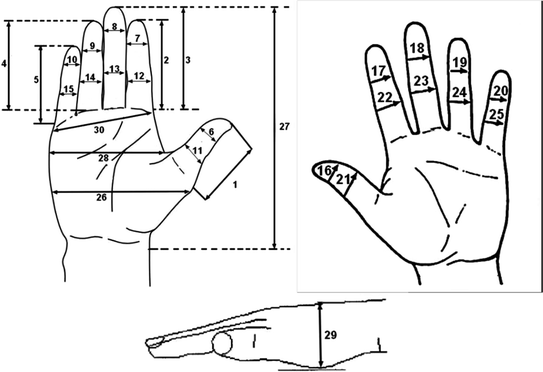Examples Of Activities Requiring Manual Dexterity
- How do people with different abilities, skills, and personalities build effective work teams?
Theoretical medical speculation is encouraged as part of the overall scientific process. However, unscientific statements that promote unfounded ideological positions or agendas may be removed. Describe any activities requiring manual dexterity (e.g. Activities requiring hand-eye coordination such as cross-stitching, sewing, art, crafts, playing musical instruments, auto repair, etc.) at which you are proficient. Nov 29, 2018 Good question! Those aspiring to take part in Dentistry or any sort of medical surgery should be honing their manual dexterity skills, and the age they should be JUMPING in that direction is only 16! Manual dexterity involves the development of hand-eye coordination and very fine motor control. Imagine the level of care and precision required in certain activities, hobbies and professions that.
Manual dexterity meaning: 1. Someone's ability to use the hands to perform a difficult action skilfully and quickly so that. Activities for Manual Dexterity. You can improve your manual dexterity by performing activities that require repetition, focus, hand-eye coordination and a steady hand. Activities such as learning to play and practicing a musical instrument, painting or sewing, hobbies such as making miniature models, writing with your non-dominant hand or even.
We begin with a look at employee abilities and skills. Abilities and skills generally represent those physical and intellectual characteristics that are relatively stable over time and that help determine an employee’s capability to respond. Recognizing them is important in understanding organizational behavior, because they often bound an employee’s ability to do the job. For example, if a clerk-typist simply does not have the manual dexterity to master the fundamentals of typing or keyboard entry, her performance will likely suffer. Similarly, a sales representative who has a hard time with simple numerical calculations will probably not do well on the job.
Mental Abilities
It is possible to divide our discussion of abilities and skills into two sections: mental abilities and physical abilities. Mental abilities are an individual’s intellectual capabilities and are closely linked to how a person makes decisions and processes information. Included here are such factors as verbal comprehension, inductive reasoning, and memory. A summary is shown in (Figure).
Internal conflict appears to be minimized with simple structures. Since few alternative relationships are generated, closure is quick.
Behavior is apparently anchored in external conditions. There is less personal contribution in simple structures.
Fewer rules cover a wider range of phenomena. There is less distinction between separate situations.
On the other hand, people with high levels of cognitive complexity are typically characterized by the following:
Their cognitive system is less deterministic. Numerous alternative relationships are generated and considered.
The environment is tracked in numerous ways. There is less compartmentalization of the environment.
The individual utilizes more internal processes. The self as an individual operates on the process.
Research on cognitive complexity has focused on two important areas from a managerial standpoint: leadership style and decision-making. In the area of leadership, it has been found that managers rated high on cognitive complexity are better able to handle complex situations, such as rapid changes in the external environment. Moreover, such managers also tend to use more resources and information when solving a problem and tend to be somewhat more considerate and consultative in their approach to managing their subordinates.
In the area of decision-making, fairly consistent findings show that individuals with high cognitive complexity (1) seek out more information for a decision, (2) actually process or use more information, (3) are better able to integrate discrepant information, (4) consider a greater number of possible solutions to the problem, and (5) employ more complex decision strategies than individuals with low cognitive complexity.
Physical Abilities
The second set of variables relates to someone’s physical abilities. Included here are both basic physical abilities (for example, strength) and psychomotor abilities (such as manual dexterity, eye-hand coordination, and manipulation skills). These factors are summarized in (Figure).
Considering both mental and physical abilities helps one understand the behavior of people at work and how they can be better managed. The recognition of such abilities—and the recognition that people have different abilities—has clear implications for employee recruitment and selection decisions; it brings into focus the importance of matching people to jobs. For example, Florida Power has a 16-hour selection process that involves 12 performance tests. Over the test period of a couple of years, 640 individuals applied for “lineperson” jobs. Of these, 259 were hired. As a consequence of the new performance tests and selection process, turnover went from 43 percent to 4.5 percent, and the program saved net $1 million.

In addition to selection, knowledge of job requirements and individual differences is also useful in evaluating training and development needs. Because human resources are important to management, it is imperative that managers become more familiar with the basic characteristics of their people.

- How do people with different abilities, skills, and personalities build effective work teams?

Ability refers to one’s capacity to respond, whereas motivation refers to one’s desire to respond. Abilities can be divided into mental abilities and physical abilities. Personality represents a stable set of characteristics and tendencies that determines the psychological behavior of people.
Personality development is influenced by several factors, including physiological, cultural, family and group, role, and situational determinants.
Activities Requiring Manual Dexterity
Glossary
- Cognitive complexity
- Represents a person’s capacity to acquire and sort through various pieces of information from the environment and organize them in such a way that they make sense.
- Mental abilities
- An individual’s intellectual capabilities and are closely linked to how a person makes decisions and processes information. Included here are such factors as verbal comprehension, inductive reasoning, and memory.
- Physical abilities
- Basic functional abilities such as strength, and psychomotor abilities such as manual dexterity, eye-hand coordination, and manipulation skills.
- Psychomotor abilities
- Examples are manual dexterity, eye-hand coordination, and manipulation skills.
